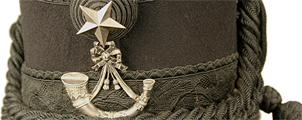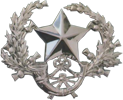The Cameronian officer who survived a deadly air crash
In this blog post, we take a look at one of the more unusual medal groups within the regimental collection, and try to catch a glimpse of the man behind the medals.
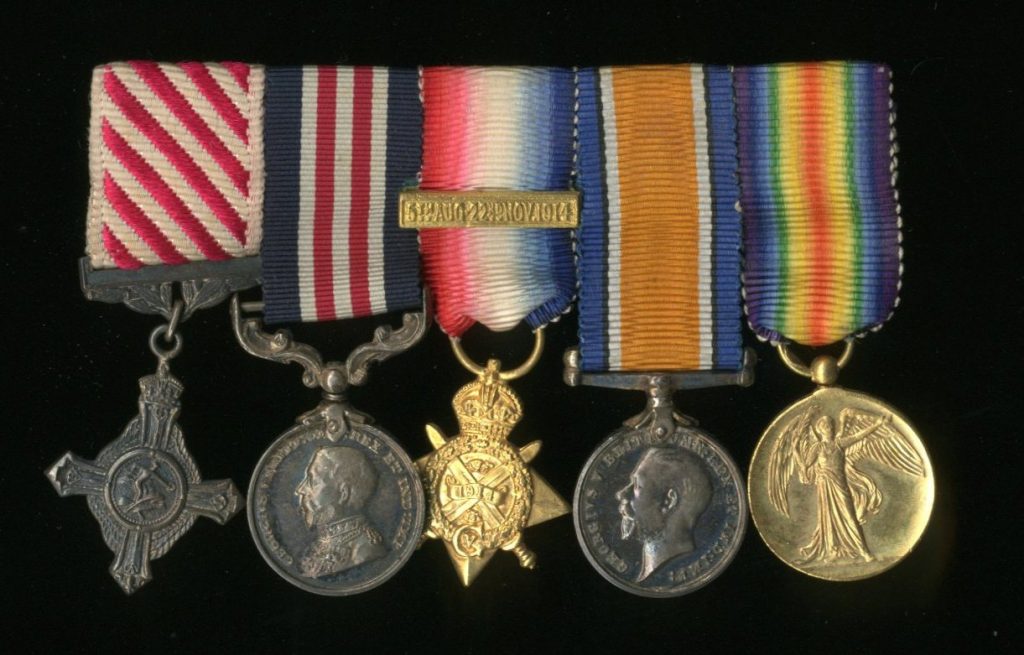
Left to right – Air Force Cross (AFC), Military Medal (MM), 1914 Star with date clasp, British War Medal, Victory Medal
The medals were awarded to Edward Albert Westall, and represent decorated service in both the Army and the Royal Air Force. Westall was born on 17 July 1887 at St Pancras, Middlesex. He enlisted in The Cameronians (Scottish Rifles) in late 1905. Westall was still serving with The Cameronians when the First World War broke out, by which time he held the rank of Lance Sergeant. He arrived in France with the 1st Battalion on 15 August 1914, thus qualifying for the 1914 Star. On 5 January 1917, Sergeant Westall was awarded the Military Medal, an award issued to British soldiers for gallantry. An experienced soldier who had been decorated for bravery, Westall was granted a commission with the rank of Second Lieutenant on 17 September 1917. He was attached to the Royal Flying Corps (later the Royal Air Force) and would remain with them for the rest of the War. The photograph below shows Westall as a Second Lieutenant; he wears the medal ribbon of the Military Medal on his chest. He retains the Glengarry and badge of his parent regiment, The Cameronians (Scottish Rifles). The thin stripe on his lower left sleeve is a Wound Stripe, indicating he had been wounded in action.
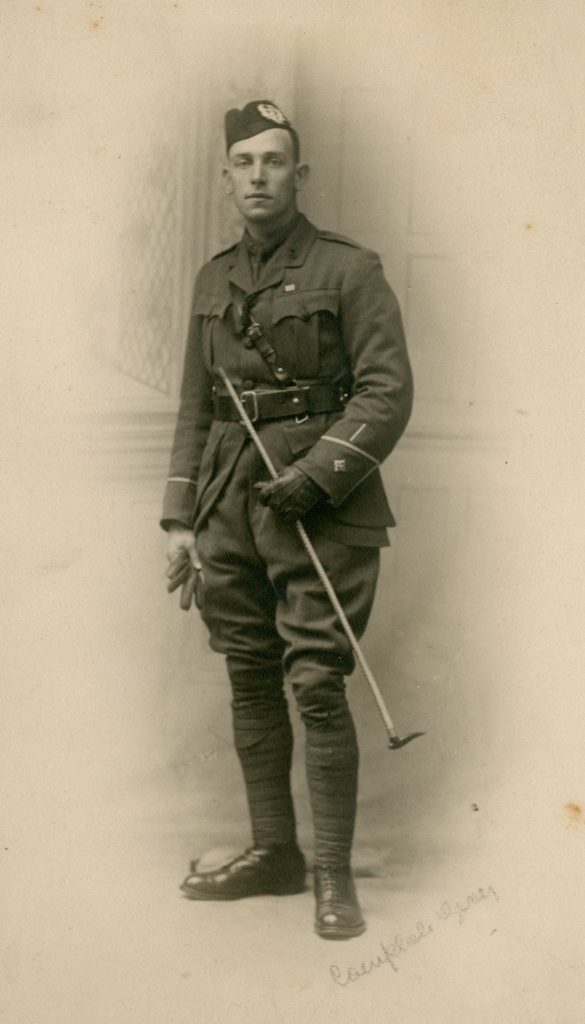
A photograph album belonging to Lieutenant Westall provides a fascinating glimpse of his service with the RFC/RAF. A common scene in the album is that of crashed aircraft, reminding us of just how dangerous those early years of flight were.
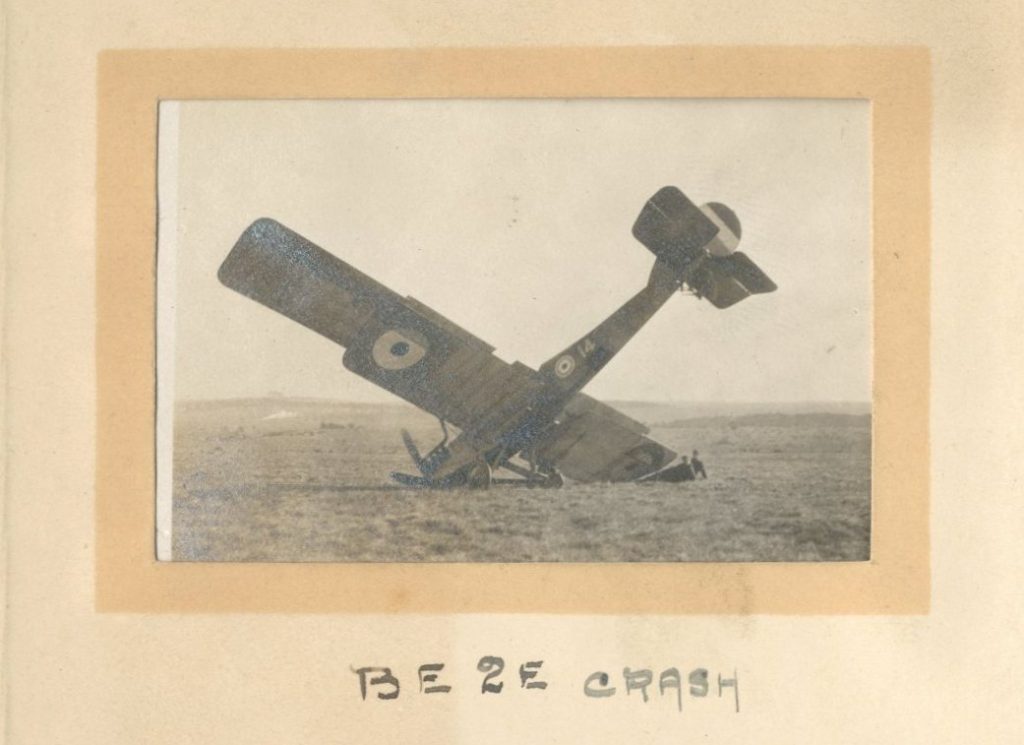
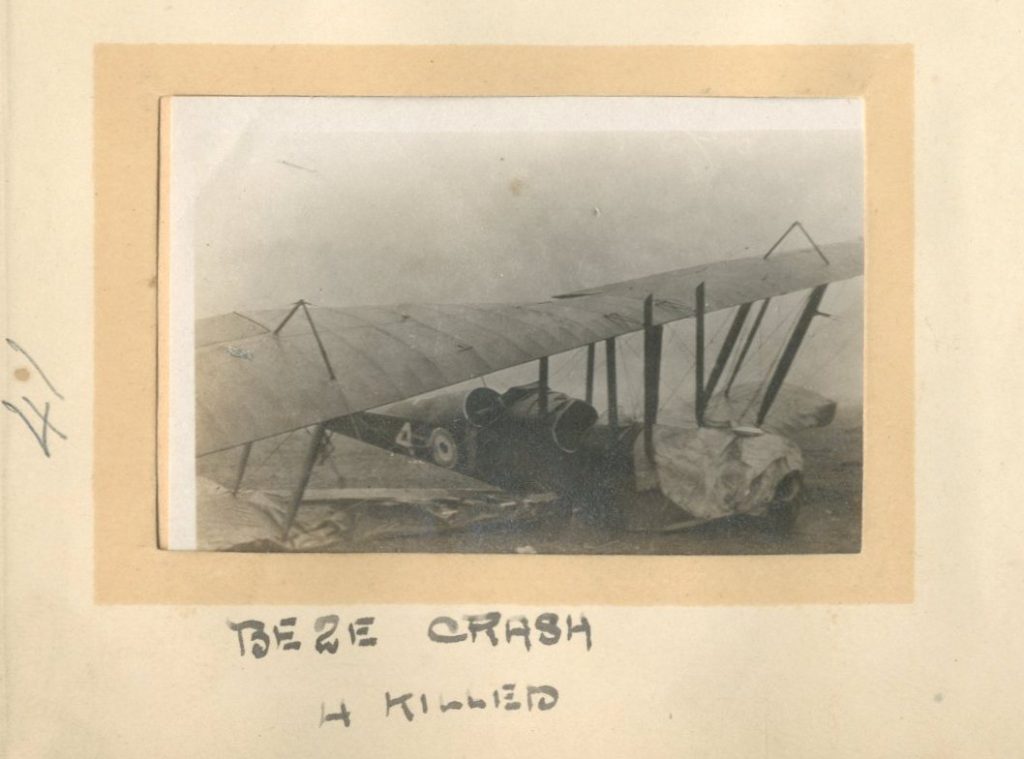

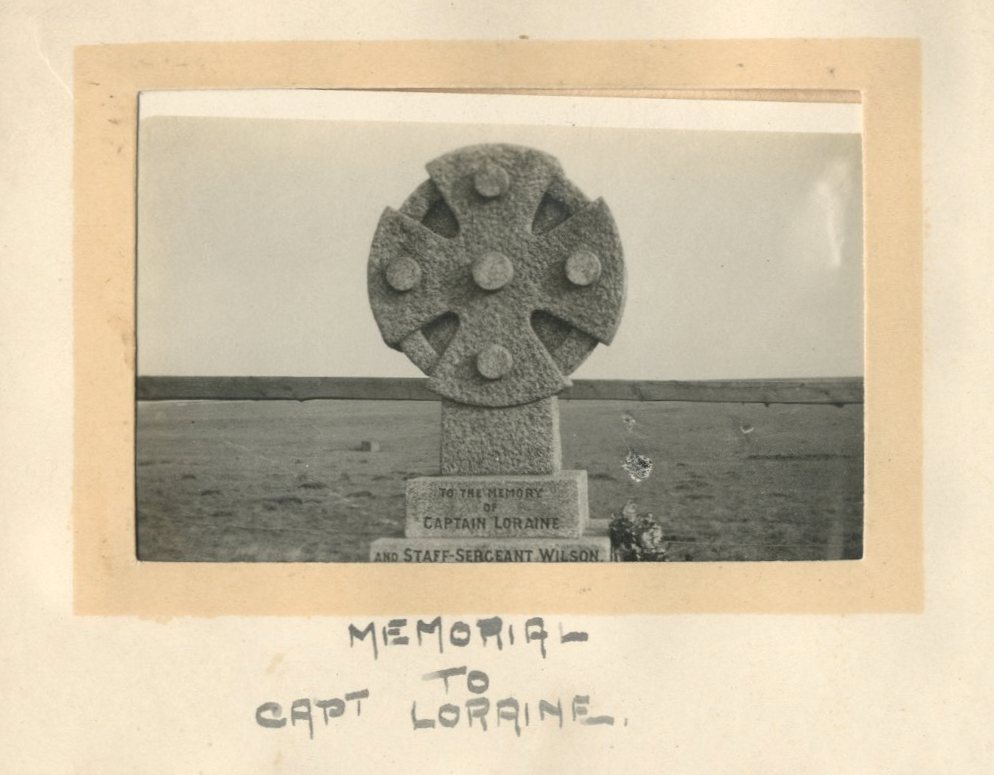
Westall continued to serve in the RAF after the Armistice of November 1918. In April 1919, he was part of the seven man crew of a Handley Page 0/400 aircraft scheduled for a circular flight around Great Britain, setting off from Weyhill aerodrome near Andover.
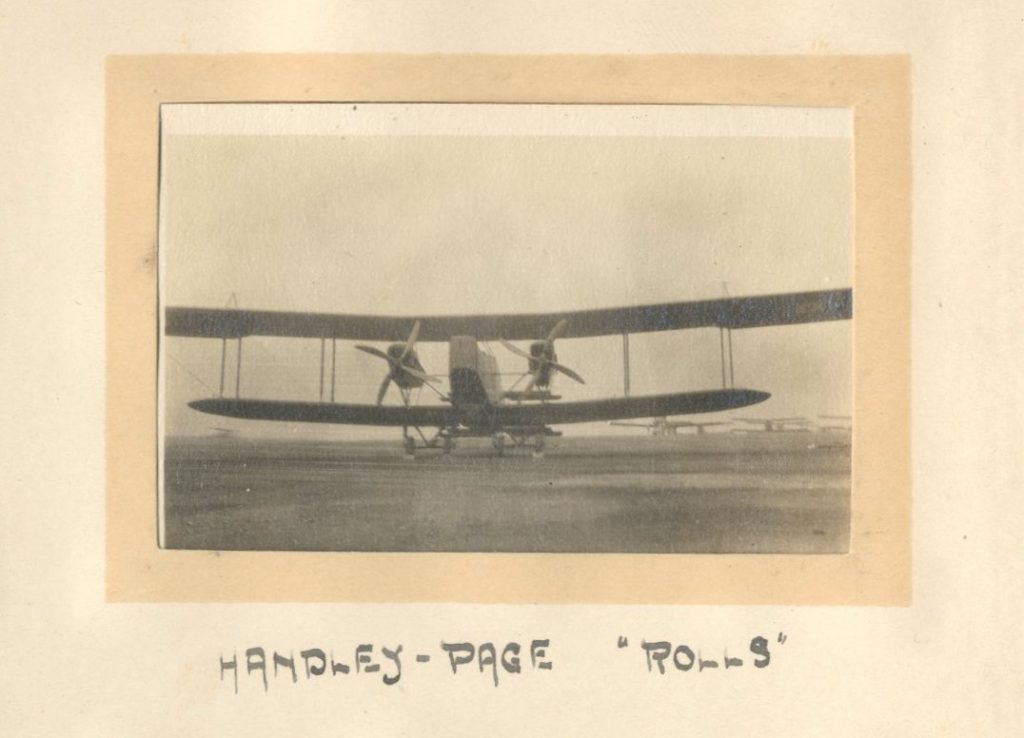
In the early hours of 22 April 1919 the plane, in which Westall was acting as Observer, clipped an aerodrome building during take-off and crashed. The 400 gallons of petrol in the fuel tanks ignited and the aircraft burst into flames. Tragically, five of the crew were trapped and killed. Westall and Flight Sergeant Smith were the only crew members who were able to escape the burning wreck; Westall receiving extensive burns to his neck and hands. Evidence given at the subsequent inquest described the scene:
I heard two slight crashes at short intervals, followed by a very loud crash. From the time of the first crash to the final one the engines were still running, and had not changed in note. I proceeded to the scene, and found the machine piled and blazing furiously against the north wall of No. 9 hut.
The fire bell was rung, and the station fire-fighters were there almost at once. The navigator, Lieutenant Westall, was discovered on the grass 20 or 30 yards away from the hut with his clothing blazing. Sergeant Smith was also discovered about the same spot, but his clothing was only smouldering. There was no hope of getting anything at all from the machine.
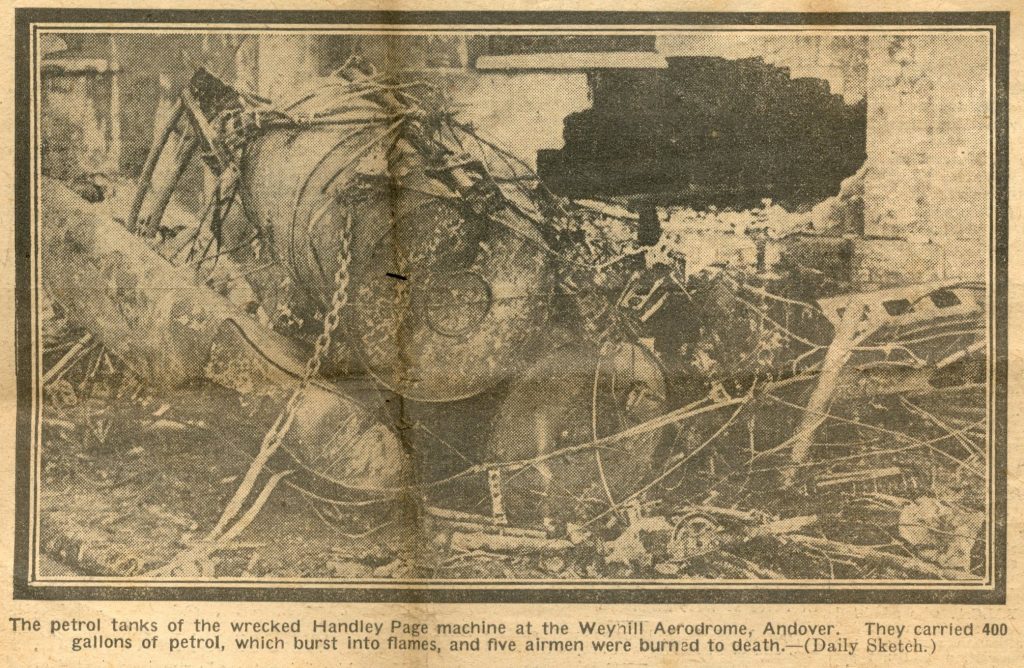
Five airmen died in the crash; Major Thomas A. Batchelor, Captain Reginald Adkins, Lieutenant Arthur B. Whiteside, Flight Sergeant H. Heales, and Corporal Edward Ward. All five had seen active service during the First World War.
Sergeant Smith, one of the wireless operators, was the only other survivor of the crash. After the initial impact, Sergeant Smith was thrown on top of Lieutenant Westall. Smith was still hooked up to the wireless equipment and Westall helped clear him of the wires to allow both men to escape the burning wreckage.
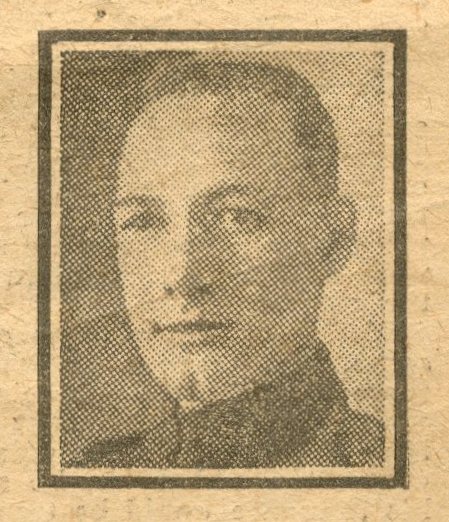
Westall’s injuries were extensive and he spent several weeks in hospital in a critical condition. Although he survived his injuries, he would bear the scars of the accident for the rest of his life. While recuperating from his injuries, Westall faced further tragedy in the loss of his wife, Florence, who died in August 1919.
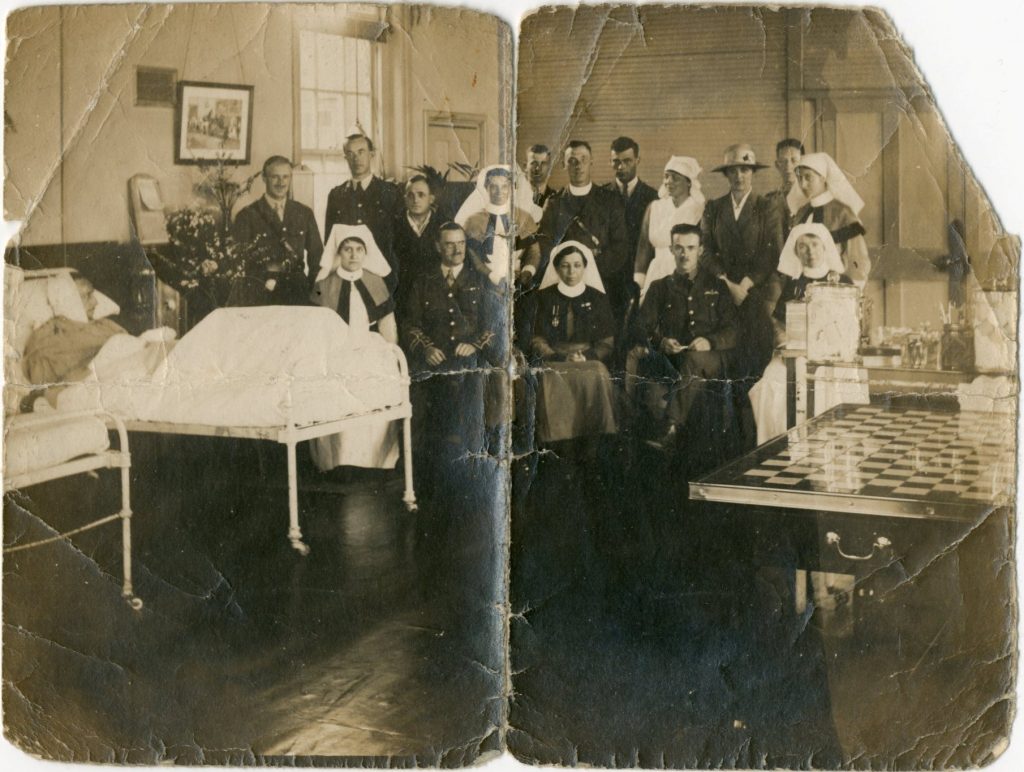
In March 1920 Westall was placed on the half-pay list on the grounds of ill-health, and ultimately retired from military service in June of that year. The London Gazette of 10 October 1919 announced the award of the Air Force Cross to Observer Officer Edward Albert Westall. No citation accompanied the award, although it is stated that it was issued for gallantry in service during the First World War. It is also possible that the award was made in recognition of Westall’s actions in assisting Sergeant Smith escaping the burning aircraft.
Westall’s Air Force Cross is the only one of its kind in the regimental collection. Very few men would have received both the Air Force Cross and Military Medal; it is almost certain that Edward Westall was the only Cameronian to receive such awards.
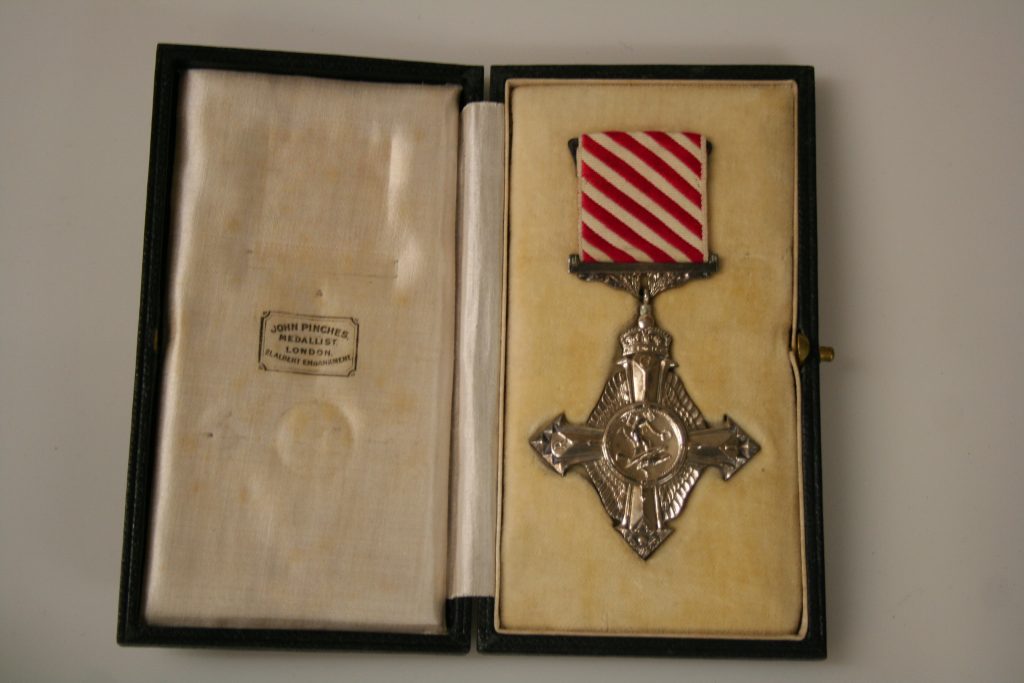
Edward Albert Westall remarried in 1920. He died on 29 June 1972 at Kennington, London, aged 84.
We are very grateful to the Westall family for gifting the medals, photographs and other items belonging to Lieutenant Edward Albert Westall to the regimental museum collection.
Comments: 0
